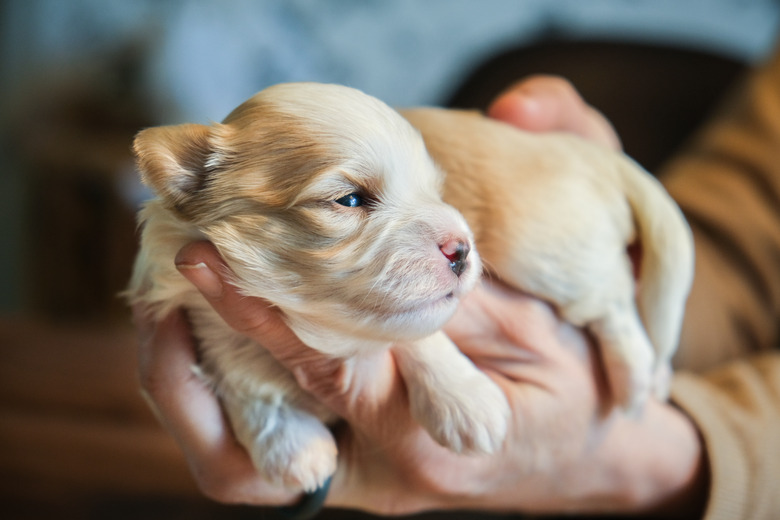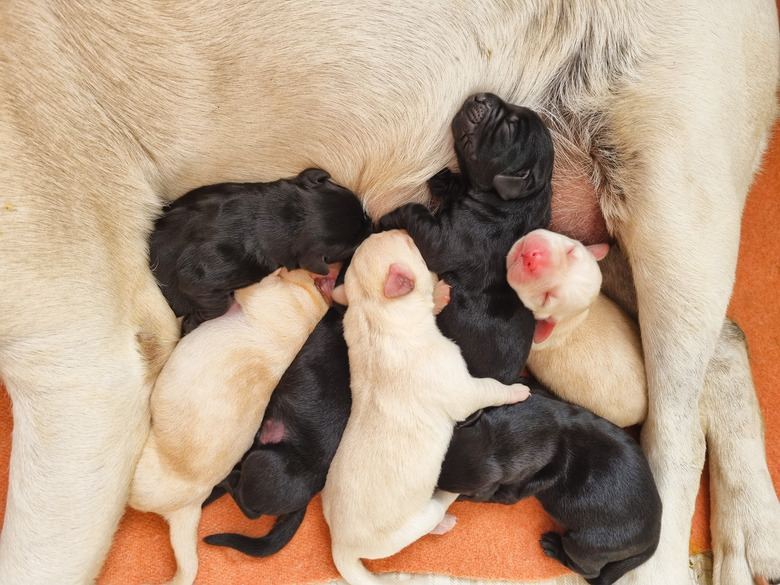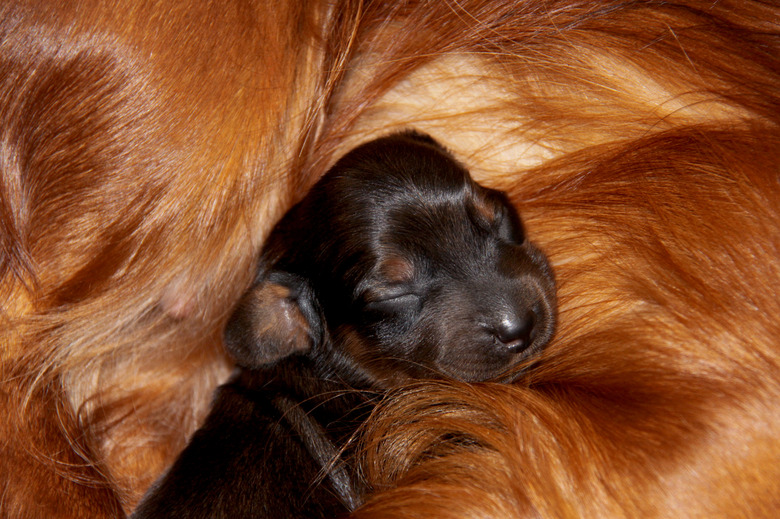How To Birth A Puppy When The Sac Has Broken
Every puppy is born inside an amniotic sac that is a part of the placenta, or afterbirth. Once you notice the sac is broken, it's important to move quickly but gently. If the sac is broken and the pup still has not passed the mother dog's vulva, you only have a few minutes to birth the puppy.
In a normal delivery, when a litter of puppies is born, each one is usually born safe inside a sac. The amniotic sac protects them and allows them to have the nutrients they need before they are born. After they are born, the mother dog breaks open the sac, at which time the pup breathes in air. If the sac breaks before the puppy is born, it is up to you to make sure that the puppy survives.
When you notice a dog's broken sac
When you notice a dog's broken sac
Make sure that the sac really has broken. You will be able to tell this if you cannot see the sac but can only see the puppy's fur. You should not be able to see the puppy's fur during a normal birth.
If you see only fur, your next step is to pull on the sac. If you still see the sac, try to pull on it to see if it is broken or not. If the sac comes out without the puppy, you will start to see the fur of the puppy and know for sure that the puppy is in trouble.
Throughout the birthing process, it's important to make sure the mama dog is not in distress. Particularly for first-time mothers or large litters, it can be helpful to stay near the whelping box after the water breaks and the first puppy is born and speak calmly to the mother. A pregnant mother may not want to be near humans as she delivers her entire litter, so make sure she knows you are going to help her. You might need to have someone holding her head or comforting her as you are working on her. Keep in mind that some brachycephalic breeds, such as bulldogs, pugs, Boston terriers, or even pit bulls, may have a more difficult whelping experience overall.
How to help birth the puppy
How to help birth the puppy
Once you see only fur and the rest of the sac has come away and it is obvious that the puppy is not being pushed through the birth canal on their own, grip the puppy with a dry washcloth. Get a firm grip but be extremely gentle.
Wait for the next contraction. When the mother dog has her next contraction, gently pull down on the puppy. You want to ease the puppy out of the mother dog as gently as you can. Don't let the puppy stay inside the mother any longer because they will suffocate if they remain inside the mother when the sac has broken.
As soon as the puppy is out of the mother, get their face clean. Do this with a washcloth or with a bulb cleanser. If the mother wants to cleans their face, let her do so. If she does not, make sure that it gets done. You should hear the puppy take their first breath.
If newborn puppies don’t breathe on their own
If newborn puppies don't breathe on their own
If you notice the pup is not breathing, the first step is to clean out their mouth with a bulb syringe or regular medical syringe and suck any fluid out of the mouth and throat of the puppy. Check again for breathing.
If no syringe is on hand, then use the swing method. Hold the pup tightly and swing them toward the ground using gravity to help clear the mouth and throat. The swing method can be dangerous if the puppy slips out of your hands or if the head and neck are not properly sterilized. The best practice would be to have a syringe on hand for all home whelping.
As soon as the puppy starts breathing, give them back to their mother. Encourage them to latch on to the teats as soon as the mama dog is done cleaning and the rest of the puppies are born. The puppies need their mother's heat to keep their body temperature up.
Remember that there can sometimes be a lag between the birth of the first pup and the next puppy. If the pregnant dog has had a normal gestation and several hours elapse between the first pup and any subsequent puppies, contact your veterinarian, who may use X-rays to determine if there are any puppies left or if a c-section needs to be performed.
The bottom line
The bottom line
While the amniotic sac normally breaks as a regular part of the birthing process, the sac breaking without the puppy slipping out of the birth canal immediately is cause for concern. Make sure the sac is indeed broken and then gently pull the pup out of the mother dog with her next contraction. If the puppy isn't breathing, use a syringe to clear the throat and lungs. If the puppy is stuck in the birth canal or if the puppy does not start breathing on their own, seek veterinary care.


